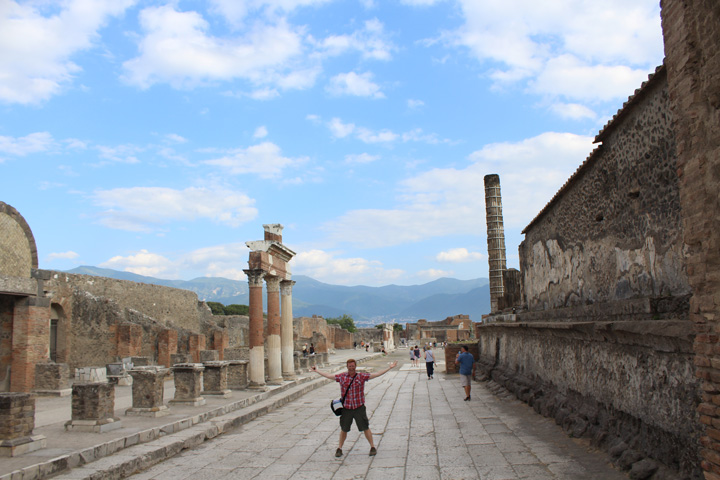Chris & Allyson vs. Italy & Croatia (June-July 2019)
Italy Day Three: Capitoline Museums, Pompeii, Trevi Fountain
You could go to Italy for the food, or the wine, or the romance, or the art. But let's be honest: No one does the collapse of once-great civilizations quite like the Italians.
Allyson and I love a good disaster, so we planned a day trip to Pompeii. Allyson had been there before during her previous marriage (a disaster of a different nature). She thought it was cool enough -- and that I'd like it so much -- that she wanted us to go together. She's sweet that way. I booked an afternoon tour of Pompeii, and since we had our morning free, I insisted on hitting a museum first. I'm sweet that way.
The museum of choice was the Capitoline, minutes from our hotel. We had walked past the buildings a few times in the previous days, and we even spotted an enormous statue of a shredded reclining guy through one of the open doors. We like giant statues with literally rock-hard abs, so this was an easy choice.
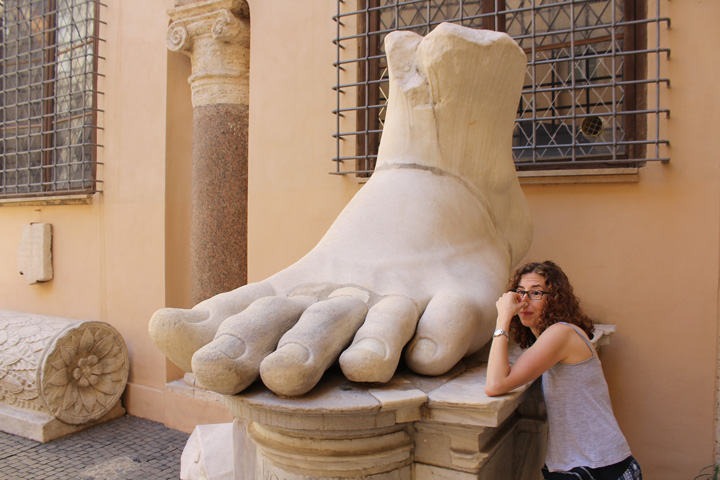
Oooh, that smell! Entering the Capitoline Museums.

Oceanus macks in the background. The Capitoline Museums.
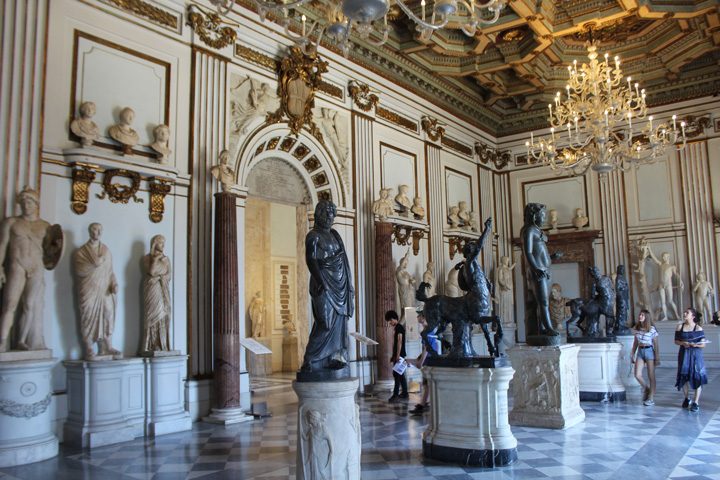
A hall filled with quite the haul -- awesome Roman mythology statues. The Capitoline.
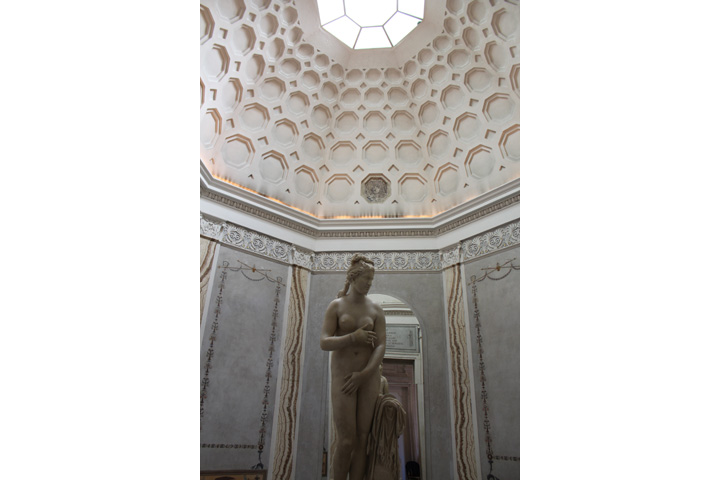
Gettin' risque with the Capitoline Venus.
The Capitoline is supposedly one of the first public museums. It started as a papal art collection, housed in some nice papal palaces, with facades and a central plaza designed by Michelangelo himself. In 1734 Pope Clement XII Corsini opened it to the public for some reason. Maybe he was being nice, or maybe he felt guilty after using tithe money to gild one of his other palaces. All that really matters is that guys in big hats bought a lot of statues on behalf of Jesus, and now you can look those statues for a nominal fee. Saints be praised.
We were doing a speed run, so we mostly skipped the Palazzo dei Conservatori -- home to the famous "She-Wolf" statue, which shows the very un-Catholic legend of Romulus and Remus suckling at a wolf's teat. Instead, we favored the Palazzo Nuovo and its well-marbled collection. For a museum owned and operated by Jesus, the Capitoline is heavy on the Greek and Roman mythology. There are gorgeous, human-sized and exquisitely genitaled depictions of all your favorite gods, including the famous "Capitoline Venus" (super hot); a statue of baby Hercules (comedically creepy); and a ridiculously huge fountain / statue of Oceanus (the poorly named river god). There's also a great gallery of life-sized busts of the emperors. It may be the closest the Romans ever came to Facebook.
The hidden bonus of the Capitoline is that it gives you access to the Tabularium, the ancient Roman records office which overlooked the Forum. Sadly, they have removed the old records, and you can't spend a morning poring over Caligula's expense accounts, searching for gilded sex toys and exotic flavored lubes made from the fruits of conquered territories. But you can enjoy the view of the Forum. It's great!
This was all very enjoyable, but we literally had a train to catch. Italy once prided itself on making trains run on time, so we walked early to Rome Termini (Italian for a train-shaped noodle). The station is very large, and was undergoing construction. Thanks to both genetics and years of socialization, when I walk into a space and look around in confusion, predators attack. An older man swooped in, offered to direct us to the right platform, then immediately started walking us there before we could refuse, then stayed by our side when we said we were fine, then asked for a tip. He was very upset that I didn't want to give him one, and I guess being an older Italian isn't a picnic, so I gave a euro. He was pissed that it wasn't more, and he walked away.
Naturally, the man had walked us to the wrong platform, but we're experienced travelers who have figured out how to awkwardly fumble around a train station in almost any country. We were on the high-speed train to Naples when it left the building. The farmland between Roma and Napoli is a delightful blur at 300 kph. Someday I hope to enjoy it at 100 kph or less. On the other hand, 300 kph is probably the right speed to enjoy Naples, unless you're a fan of graffiti. It has the outward appearance of a dump -- one friend described it as the Newark of Italy -- thanks to a slew of grimy, uninspiring buildings.
But Naples was not the dilapidated metropolis we were there to see. We switched over to the "Circumvesuviana," a light rail system servicing Naples and all the adjacent areas that will also be destroyed in the next eruption. After a 30-minute journey with Naples' hoi polloi, we found ourselves at the "Pompei Scavi - Villa Dei Misteri" station -- about 15 minutes before our tour started. The military precision was amazing and I absolutely deserve a medal for my D-Day level logistics.
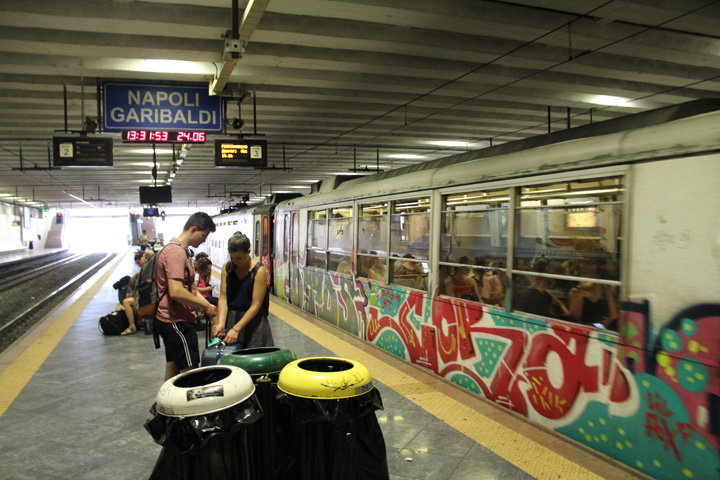
The Naples transit cars are tagged to holy hell. It's awesome.
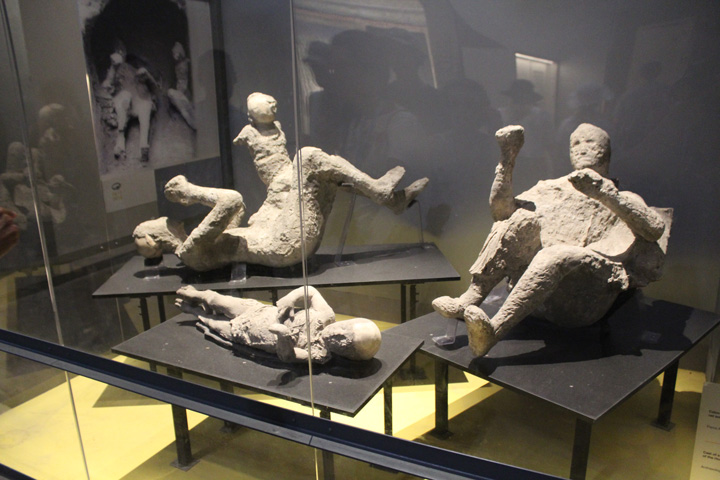
Some of the fabled death casts of Pompeii. One guy appears to be doing crunches.
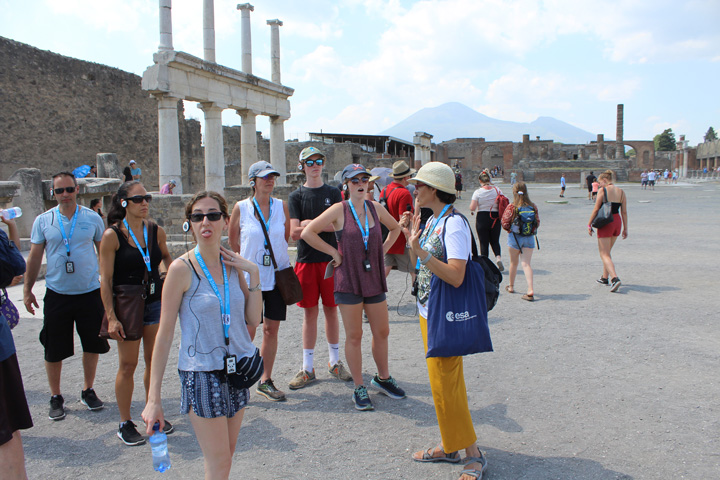
Allyson soaks up some info from Francesca as the tour begins.
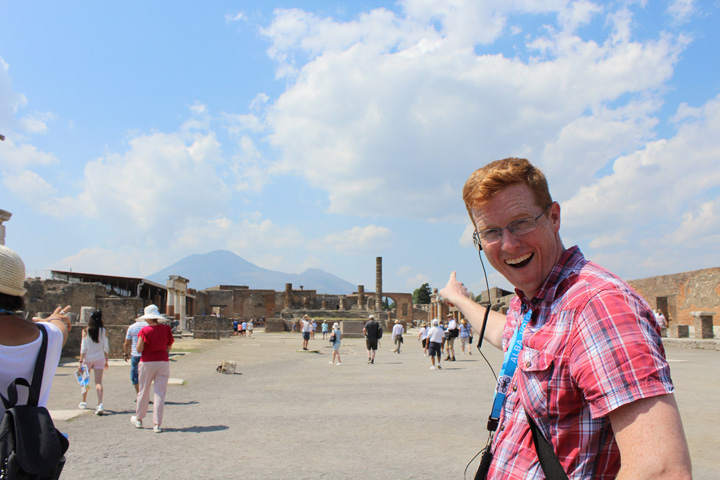
2,000 years later, still in the shadow of the beast.

The sunny side of the street! Note the raised "crosswalk" stone on the left.

Beware of dog. The Romans did not invent invisible fencing, I guess.

Order or get out. One of the many commercial properties in Pompeii.
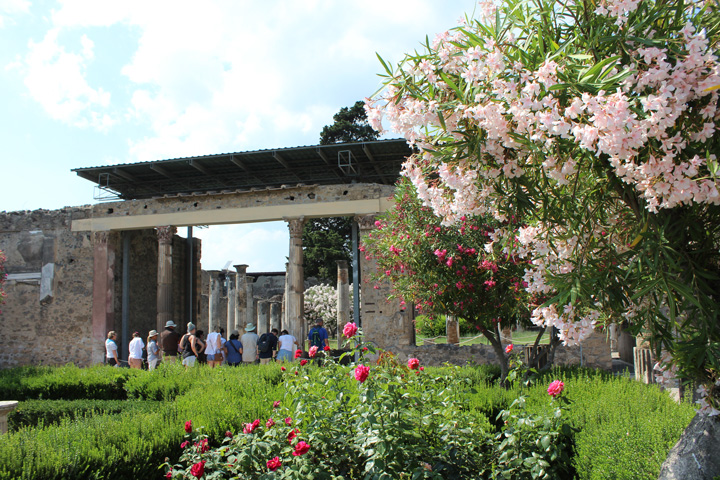
Modern flowers bring out the beauty of an ancient courtyard in a larger residence.
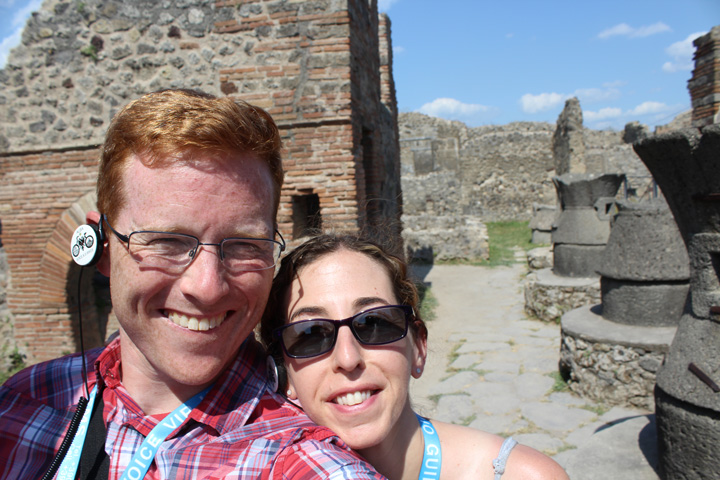
This is a bakery -- we're right in front of the big brick oven.
Also deserving of a medal: Francesca. We signed up for a "small group" tour of Pompei, and Francesca was our guide. I'm not sure of her exact background, but she was an Italian lady with some kind of education in architecture, and she did an excellent job. Being a great Italian tour guide is no small feat -- you have to be coherent in a second language, while catering to dullards from around the world. Aside from the DC dullards, Francesca was dealing with people from New Jersey and Charlottesville, Va.
She was outstanding, providing a coherent narrative for the Pompeii story and answering whatever stupid questions were tossed her way. (Full disclosure, most of them were from me.) We spent hours in Pompeii -- a sprawling and remarkable site -- but here's the gist:
In ancient times, the region around modern-day Naples was actually attractive because of the volcano. Eruptions of Mt. Vesuvius created very good soil for farming, and since the volcano wasn't that far from the sea, it was easy to move products to market. Plus, the volcano hadn't gone off in ages! What could go wrong?
By the standards of the first-century Roman Empire, Pompeii was a very nice settlement. After subduing it, the Romans wanted to keep it happy. So it had the amenities of an upscale community: an arena, lots of shops, plumbing, and (most important) brothels. It had a thriving population and plenty of visitors thanks to its status as a commercial hub.
We know this to be true, because Pompeii was obliterated in a very specific fashion. The eruption in 79 AD was foretold by a bunch of quakes. That early seismic activity might have scared some people away -- modern experts do not believe that Pompeii's full population was in residence when it hit the fan. Everyone who ran off to their beach house in Sicily lived happily ever after. Those who stayed regretted it, for the very short time before they died. The eruption initially dumped a few feet of ash on the city. There was a pause, and then a second belching of ash buried whatever was left. We now know that many people fled to the port to escape the devastation -- but the people who waited too long were flash-fried, and not in the fun Cracker Barrel way. The toxic gases and ashes hit them so quickly that they perished in defensive postures, covering their faces and cowering in pain. When their remains decayed into dust, they left "holes" in the shape of their dying bodies. Centuries later, archaeologists injected plaster into those holes, producing horrifying casts of people in the last moments of their lives. For the buildings, organic-based ceilings and beams burned off, but a remarkable amount was preserved: all the foundations, stone-based decoration and even some of the paint jobs.
In Roman times, authorities believed that the city had been erased from the map. Maybe they just didn't feel like digging. Many centuries later, archaeologists discovered that it was all there, preserved in freakish perfection. Today about two-thirds of ancient Pompeii has been excavated. The rest remains buried by design -- in part because it's expensive to uncover and maintain the ancient city, and also to serve as a backup in case the volcano erupts again. If the landscape is obliterated in the 21st century, that final third will be protected by the 2,000-year-old layer of ash. (We climbed atop the "buried" Pompeii at one point to get a good overview of the ruins.)
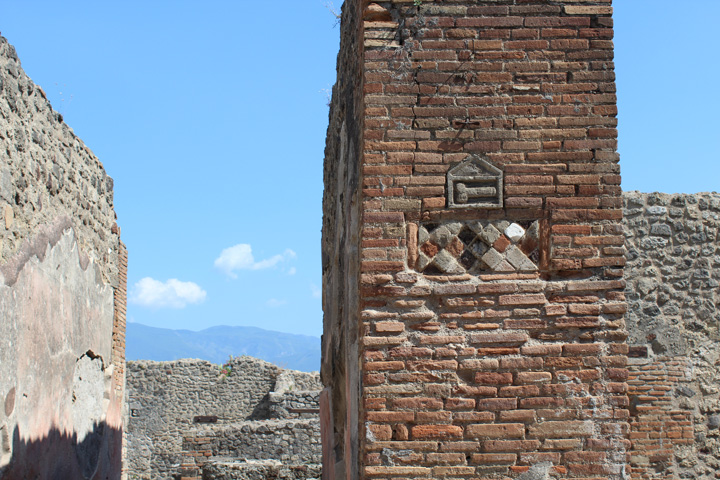
Which way to the good times? Oh, wait, never mind.

Francesca fills up at one of Pompeii's revitalized fountains.
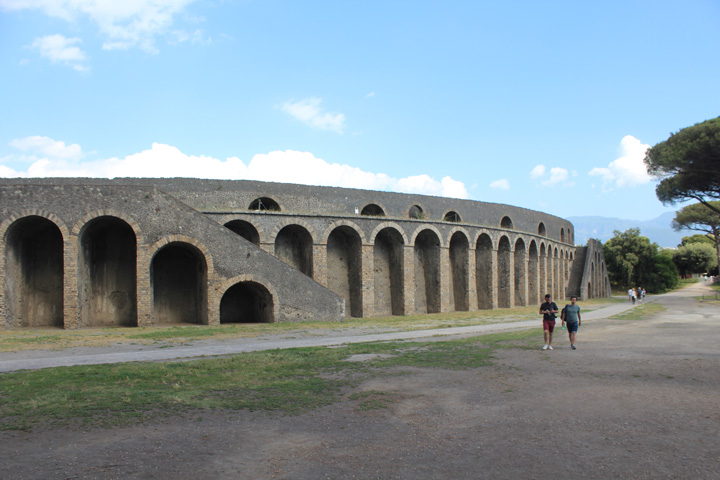
Rome's equivalent of the minor leagues! The extremely well preserved Pompeii arena.
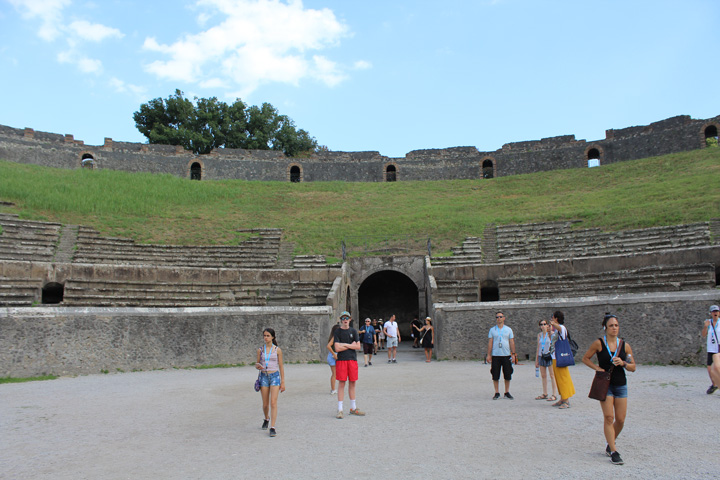
On the floor of the mini-Colosseum. Way better than our tour of the actual Colosseum.
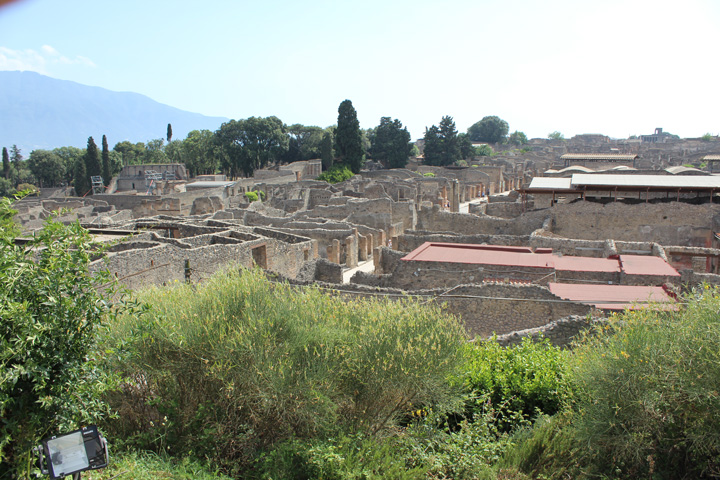
The view from atop the still-buried ruins, looking at the uncovered ruins.
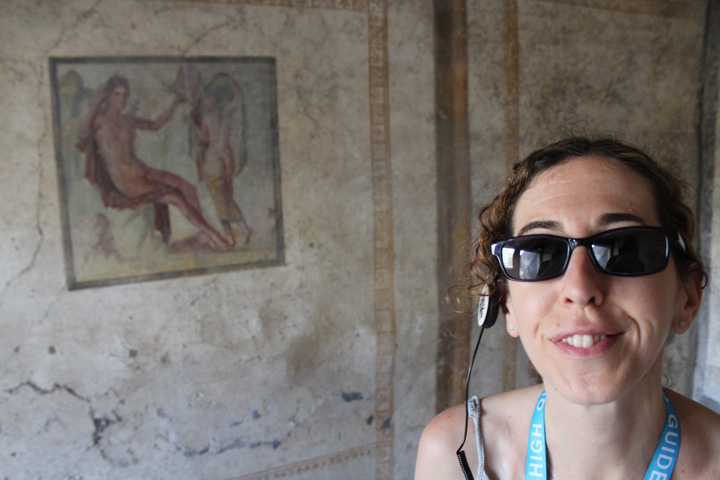
One of these is a timeless work of art. The other is a wall painting.

The awesome vaulted structure of Pompeii's bathhouse.

Part of the Denny's style "picture menu" at the brothel.
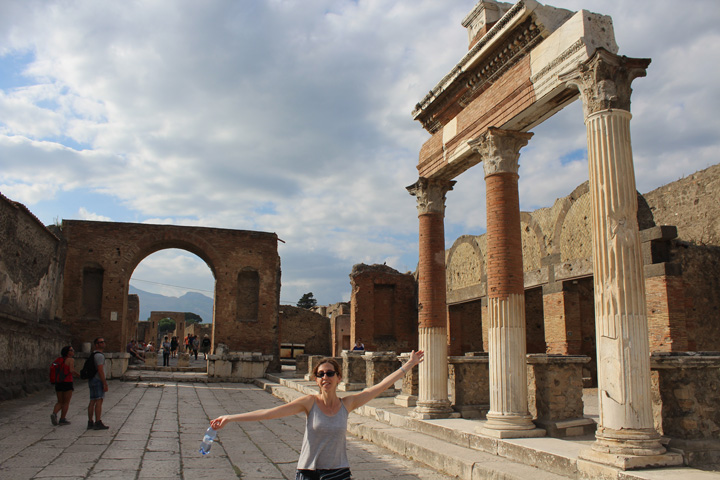
Nothing could ruin this day! Not even the ruins.

It's like Disneyland for history freaks.
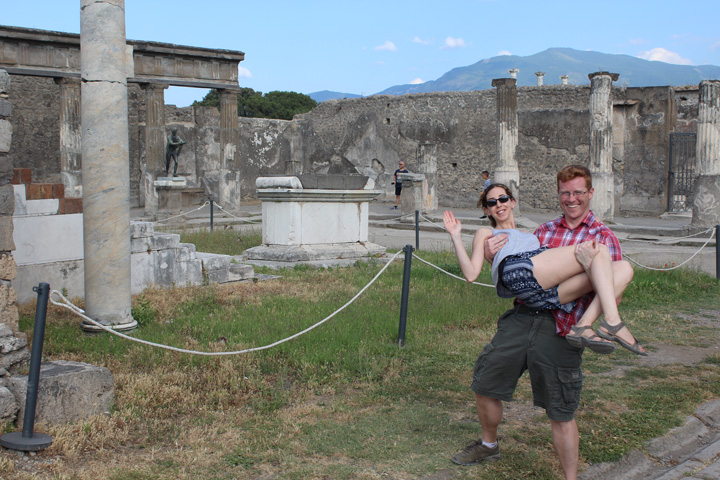
Striking our pose at the temple of Saturn.
Francesca let us know that overall, Pompeii would have been a nice place to live. Like San Diego, but with a volcano! A lot of the homes, which had the same floorplan, were very large. They had courtyards, back gardens and dining rooms -- and they were generally much larger than what you'd expect from a very old stone structure. In the ruins, shops are clearly identified by counters with spots for inserting pots and basins. Pompeii had a lot of shops -- and it also had very little zoning, as shops and homes were regularly side-by-side. And don't forget the amenities! Pompeii was recently Romanized at the time of its destruction, and it had the trappings that the Roman overlords used to placate the conquered: chiefly a theater and an arena. (Why rise up against your tyrannical oppressors if there's a good incest comedy in town?) We walked on the floor of the mini-Colosseum, where Pink Floyd famously gave a concert to ... uh, no fans. There was also a training complex and barracks for the gladiators. Francesca told us they were short were short and fat, and had excellent doctors on call -- from a financial standpoint, it makes no sense to keep killing your biggest box-office draws, so duels to the death between handsome 6'1" fitness models are more of a Hollywood creation.
In fact, Francesca was full of outstanding details. She doted on the city's complex roads: There were elevated sidewalks, substantially higher than the rutted stone streets. At different intervals, they installed "crosswalks" of elevated blocks, with the tops at the level of the sidewalk. This allowed two things: horse crap and general human filth could pile up in the streets, but pedestrians could avoid stepping in it; and the height of the blocks and the spaces between them might allow horses and carts to pass through or over them. The good men and women of Pompeii even had a network of one-way streets and pedestrian-only business districts. They were probably weeks away from inventing speeding cameras when Vesuvius went off.
Our excellent guide had jokes -- when a feral dog trotted past, she said, "that's a 2,000-year-old dog." She painted a nice picture of everyday life in Pompeii, especially with some of the "functional" ruins -- such as the bath, and the whorehouse (where the menu of services was painted on the walls as pictographs, like a Wendy's menu but more fun), and the bakery, and the shops. She pointed out centuries-old political graffiti on one wall, that served as the town bulletin board. She showed us Pompeii's famous "Cave Canem" mosaic -- the classic warning that even some Romans were awful at training their pets -- and she called our attention to the various penises carved into streets and walls. They might have been good luck charms, or they might have artfully pointed tourists in the direction of the nearest lupanarium. We lingered in the well-preserved bath house, where the elite passed their time as their slaves and servants made things actually happen.
I particularly enjoyed the story of the rotting fish paste. Pompeii was famous for making "garum," a fermented fish sauce that was used as a condiment. Apparently you made it by putting decaying fish parts in a jar, then leaving it out in the summer sun, on the sidewalk in front of your house. It was like cooking fish in the office microwave, only everyone was doing it. As a rule, I enjoy any story that reminds us that the past smelled absolutely horrible.
We walked a lot, and the sun was punishingly hot. But there was also a breeze. The ruins themselves created all the shade you needed for a little relief, and you could refill your water bottle from the same fountains the citizens of Pompeii used two millenia ago. It was all exhilarating. Some ruins are just piles of rocks. Pompeii is the closest we'll see to a snapshot of everyday life 2,000 years in the past. If you love history you owe it to yourself to visit, before the volcano goes off again.
After the tour ended we grabbed some snacks in the Pompeii cafeteria -- sadly they didn't have garum next to the ketchup and mustard -- then strolled around a little more to take some pictures. We then had to find our way back through the maze to get to the train station for the Circumvesuviana back to Naples. The train back to Rome, we sat with Bill and Donna, an older couple from State College, Pa., who had brought their niece to Rome as a graduation present. Bill and Donna were tech writers who had lived in Houston; Donna was from Massachusetts. They were pretty cool. They were also with the niece’s boyfriend and (I think) either the niece's parents or the boyfriend's parents. The niece, miraculously, was from Windber -- a middle-of-nowhere Central Pennsylvania mining town, where Allyson and I had stayed at a very quirky hotel. They were shocked we had heard of it; we were shocked to meet real-life Windberians in Europe. The world is smaller than you think.
It was late when we got back, but in the spirit of maximizing the day, we walked from the station to the Trevi Fountain. I steered us past the Italian equivalent of the White House: the Quirinale was the Pope's old summer residence originally, and it's huge. It's not exactly clear why you'd need a summer residence less than five miles from your other enormous art-filled palace, since the temperature there didn't seem notably better than down by the Tiber. But who knows, maybe there was a garum factory over by the Vatican.

Mandatory fun: the huge crowd at the Trevi Fountain.
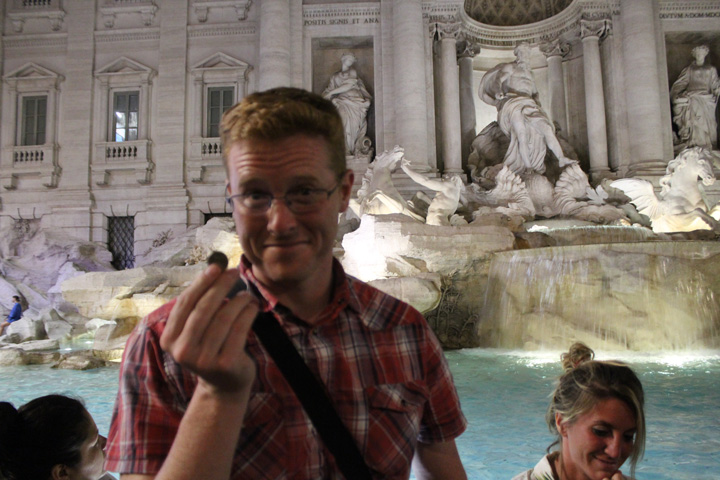
Make a wish, baby.

Water world. The very impressive Trevi Fountain.
The Trevi Fountain is on the list of things you HAVE to see in Rome, or at the very least you have to lie to people afterward and say you saw it. Pope Clement XII commissioned it, and Nicola Salvi started building in in 1732. Thirty years later, Salvi was dead -- another architect was hired to finish up -- and Pope Clement XIII presided over the opening ceremonies. It shows the god Oceanus, flanked by a bunch of ocean-type-thingies, like tritons and hippocampi, and it is very big. Like, half a football field wide.
It is also very crowded. We rolled up at 9 p.m. to find a throng of tourists taking selfies, hanging out for no particular reason, and throwing coins. Tradition says that if you face away from the fountain, hold a coin in your right and throw it over your left shoulder, one of two things will happen: It will land in the fountain and you will get your wish; or it will hit another tourist in the face and something wacky will ensue. It's not clear to me how this tradition started, but I'm guessing it was the city government trying to scrape together some extra cash.
We thought it would be nicer if the crowd thinned out, so we ducked into a pizzeria just off the square. We talked about natural disasters and carbo-loaded way too close to bedtime. When we were done our mean, the crowd ... was basically the same. So we ran with the herd, got our mandatory pictures and headed back to the hotel. The next day, Jesus was waiting. Well, the Vatican at least. That's where he lives, right?
